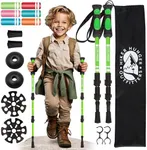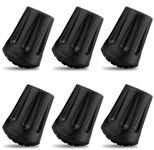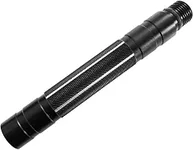Buying Guide for the Best Leki Trekking Poles
Choosing the right trekking poles can significantly enhance your hiking experience by providing stability, reducing strain on your joints, and improving your balance. When selecting trekking poles, it's important to consider several key specifications to ensure you find the best fit for your needs. Here are the main factors to consider and how to navigate them.MaterialThe material of trekking poles affects their weight, durability, and cost. Common materials include aluminum and carbon fiber. Aluminum poles are generally more durable and less expensive, but they are heavier. Carbon fiber poles are lighter and absorb vibrations better, making them ideal for long hikes, but they can be more expensive and less durable. Choose aluminum if you prioritize durability and cost, and carbon fiber if you prioritize weight and comfort.
AdjustabilityAdjustable trekking poles allow you to change the length to suit different terrains and your height. This is important for comfort and efficiency. Poles can be telescoping or folding. Telescoping poles are easier to adjust on the go, while folding poles pack down smaller for travel. If you hike on varied terrain, adjustable poles are a good choice. Fixed-length poles are lighter and simpler but less versatile.
Grip MaterialThe grip material affects comfort and sweat management. Common materials include cork, foam, and rubber. Cork grips conform to your hand over time and manage moisture well, making them comfortable for long hikes. Foam grips are soft and absorb sweat, but they can wear out faster. Rubber grips are durable and provide a firm hold, but they can become slippery when wet. Choose cork for comfort, foam for sweat absorption, and rubber for durability.
WeightThe weight of trekking poles can impact your energy levels over long hikes. Lighter poles reduce fatigue and are easier to carry, while heavier poles can provide more stability and durability. If you plan on long-distance hiking or backpacking, lighter poles are preferable. For shorter hikes or if you need more stability, slightly heavier poles may be beneficial.
Locking MechanismThe locking mechanism keeps the poles at your desired length. Common types include lever locks and twist locks. Lever locks are quick and easy to adjust, even with gloves on, and are generally more reliable. Twist locks are lighter and more streamlined but can be harder to adjust and may slip over time. Choose lever locks for ease of use and reliability, and twist locks if you prefer a lighter, more compact design.
Shock AbsorptionSome trekking poles come with built-in shock absorbers to reduce impact on your joints. This feature is particularly useful for those with joint issues or for long descents. Shock-absorbing poles can be slightly heavier and more expensive. If you have knee or joint problems, or if you plan on hiking downhill frequently, consider poles with shock absorption. Otherwise, standard poles without this feature may suffice.
Basket SizeThe basket at the bottom of the pole prevents it from sinking too deeply into soft ground. Larger baskets are better for snow or muddy conditions, while smaller baskets are suitable for hard-packed trails. If you hike in varied conditions, look for poles with interchangeable baskets. Choose larger baskets for snow and mud, and smaller baskets for regular trails.


















